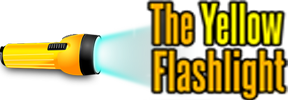With AI stepping onto the graphic design stage, the creative world buzzes with excitement and skepticism. Are these smart tools friend or foe to designers? Discover how AI promises to revolutionize the industry while also sparking debates over creativity, jobs, and the future of design.
The Rise of AI in Graphic Design
A few years back, seeing a computer conjure up a snazzy logo or eye-catching poster felt Sci-Fi enough to seem ridiculous. Well, surprise, designers! AI just rolled into town riding a hoverboard, casually wearing sunglasses, and holding a latte—ready to shake up graphic design.
It all started quietly, with little things carefully slipping under our radar. First, AI tackled repetitive tasks—aligning layers, automatically resizing images, or swiftly picking harmonious colors. Designers suddenly had more time to flex creative muscles instead of fiddling endlessly with monotony.
Then, AI tools got smarter. Suddenly, we had algorithms creating full-blown unique designs, suggesting layouts, or even pitching cool branding ideas. Apps like Adobe Sensei started powering the creative process, helping human designers streamline routine steps through automation and intelligent suggestions. AI’s like your well-meaning colleague offering unsolicited—but surprisingly decent—design advice at 2 AM.
Take image editing—AI has totally rocked our workflows here. Tools like the Photoshop Beta Version leverage AI to quickly and effortlessly enhance photos, remove distractions, or even swap out backgrounds.
Yet this surge raises a tricky question: where does clever computer-assistance end and creative authenticity begin?
AI’s Creative Limitations Versus Human Intuition
So here’s the thing—AI is pretty darn clever, but when it comes to creativity, it can sometimes be like your friend who tries a bit too hard telling jokes at a party. Yeah, it gets some laughs (points for effort!), but it’s missing that quirky spark only real charmers have. See, creativity isn’t just about following rules or screening a bazillion images to figure out a pattern. It’s about intuition, emotional response, and human weirdness—stuff AI can’t quite mimic.
Ever tried explaining why you picked a particular shade of blue? Good luck getting AI to grasp “because it just feels right!” Human designers intuitively sense mood, context, and brand emotion, while AI machines mostly miss those subtle yet crucial nuances. After all, choosing the perfect color palette can make your brand pop in all the right ways—something AI alone might struggle with. (Need help figuring this out? Check out how to choose the perfect color palette for your brand).
Sure, AI-generated designs might amaze us with slick visuals, but they often lack authenticity and real emotional connection. Human creativity breathes life and genuine personality into designs, knowing just when to break (or bend) the rules. Let’s face it—machines are talented, but humans have that intuition-powered magic.
Collaborative Potential: Humans and AI
Imagine Batman without Robin or cookies without milk—not quite right, right? Well, that’s how it is with graphic designers and AI—they make a powerhouse duo when teamed up. Instead of fearing AI as a job-stealing enemy, graphic designers can see this tech-savvy partner as the ultimate creative companion.
Take tedious, repetitive tasks like resizing images or cleaning backgrounds; let’s face it, no designer jumps out of bed excited for those jobs. Here’s where AI jumps in like your superhero sidekick, zooming through routine chores so humans can focus on innovation. Tools that automate repetitive design tasks using scripts and AI can magically erase frustrations and set imaginations free.
Also, think of your artistic process. AI can throw endless suggestions into your creative mixing bowl for fonts, colors, and layouts. Humans sift through these tasty ingredients, choosing the perfect blend that packs a punch of meaning and emotional flair. Simply put, designers’ imaginative brains plus the speed and efficiency of AI equals stellar designs at warp speed.
The Future Design Landscape
Let’s take a ride into graphic design’s crystal ball. No hoverboards just yet, but AI-driven creativity is definitely shaking things up. Picture a future designer sipping coffee while AI generates logo variations automatically—yep, it’s happening. But hold your magic wands; designers aren’t going anywhere anytime soon! The landscape of graphic design is evolving, turning designers into trendspotters who creatively steer AI tools. Instead of wrestling with repetitive tasks (who actually enjoys resizing banners?), designers can focus on truly inspiring concepts.
While automated AI assistants rapidly mock up palettes and typography styles tailored to clients’ whims, designers get more bandwidth to experiment, innovate, and flex their creative muscles. Remember how flat design overtook every logo back in 2013? Well, AI might predict the next craze even before it emerges. Imagine knowing about Graphic Design Trends for 2025 today—talk about a time-saver!
Bottom line: AI tools will become your trusty sidekicks, liked upgraded design buddies always there to help you rock your creative magic.
Final words
AI presents both challenges and opportunities in graphic design, opening doors to innovation while reshaping job roles. The collaboration between human creativity and AI technology might just redefine the design world. By embracing this evolution, we discover untapped potential. The future of design is bright—for humans and AI.
